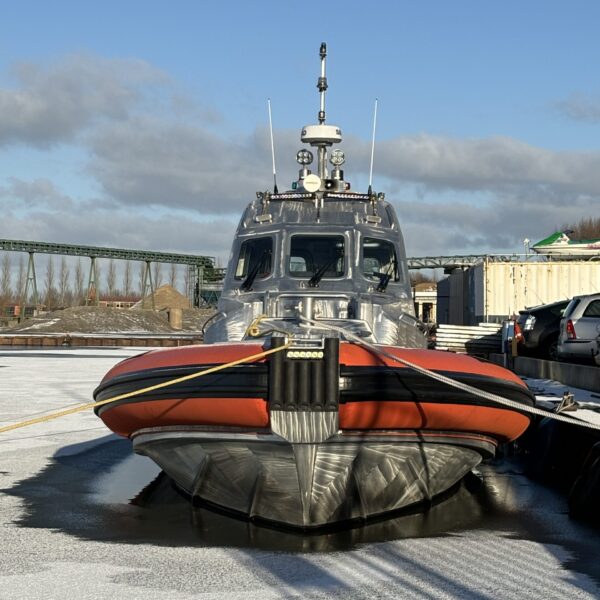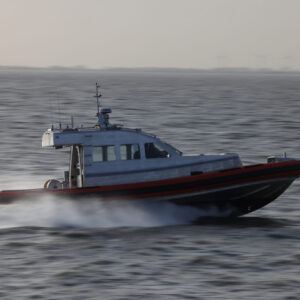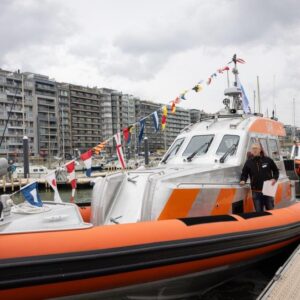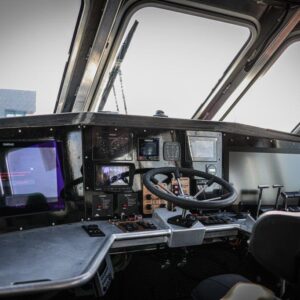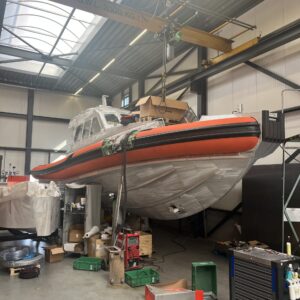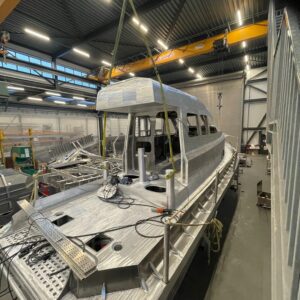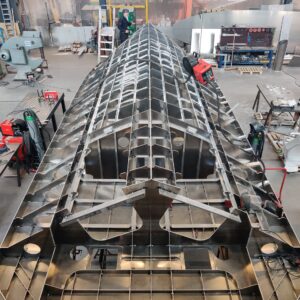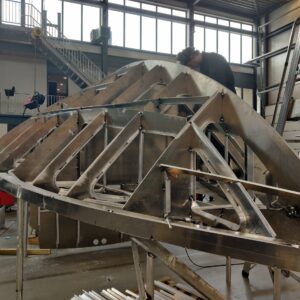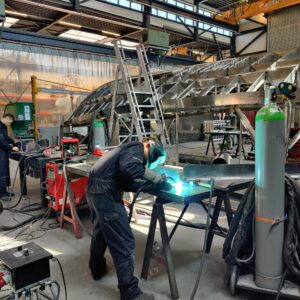While the volunteers of the “Vrijwillige Blankenbergse Zeereddingsdienst” (VBZR) are very satisfied with their current largest SAR vessels, STRAFFE HENDRIK & STERKEN DRIES, there are undeniably points for improvement on these designs.
The working area of the VBZR extends from the Dutch coast at Cadzand to the Belgian city Ostend. Rescue operations outside the 5‑mile zone also fall within the scope of the VBZR.
The main goals for their new design where to reduce vertical acceleration, noise, fuel consumption and emissions, improve towing capabilities, comfort and safety of those on board.
VBZR presented a concept for the new lifeboat, this concept was the base of which Habbeké Shipyard’s Naval Architect Pieter Meuzelaar started to design the Fast Rescue Craft (FRC) © 1405. The result will be a state of the art all-weather, self-righting Lifeboat with excellent performance.
The name of the new vessel is HEROZ
Hull:
The hull lines are based on her smaller sister, the FRC©903 SD, with deep‑V to ensure good seakeeping capabilities and performance. The length of the forefoot is balanced to reduce the risk of broaching in following seas, but also ensure enough reserve buoyancy in case of bow-diving.
Wheelhouse:
The fully enclosed wheelhouse gives maximum comfort to the crew and allows to accommodate an injured person on a stretcher. But when the large pantograph door is open it gives the benefits of an open Lifeboat. The coxswains position is so that he has an unobstructed view all around.
Propulsion:
Essential for manoeuvrability, shallow-water operations and the safe recovery of persons at the stern, propulsion with waterjets was a given from the start. On the FRC © 1405, each Kamewa FF375S waterjet is powered by a MAN i6 main engine, good for 850 bhp each, so a whopping total of 1700 bhp, which propel the boat to a maximum speed of 45 knots!
The engine room and jet room are separated with a watertight bulkhead. Although the engines are massive for a Lifeboat this size, there is ample space around each of the engines for maintenance. Each main engine also has a completely individual fuel supply. But in case of emergency both fuel tanks can be connected.
Deck layout:
There is a large unobstructed aft deck, with flush stored recovery platform. The layout of the towing bitts is specially designed by the volunteers of the VBZR and ensures maximum towing capabilities.
On the fore deck there is also a towing bitt positioned on the push-bow. The anchor is stored inside the push-bow, hand-grips ensure safe working, even in heavy sea state.
General particulars:
Length overall : 13,85 m
Beam overall : 4,55 m
Draught : 0,80 m
Operational weight : 14,80 ton
Power (total) :1700 bhp @ 2300 rpm
Speed max. : 45 knots
Speed cruise : 35 knots
Range (cruise) : 8 hours
Crew : 6
Rescued : 50
Fuel oil capacity : 1350 lt.

